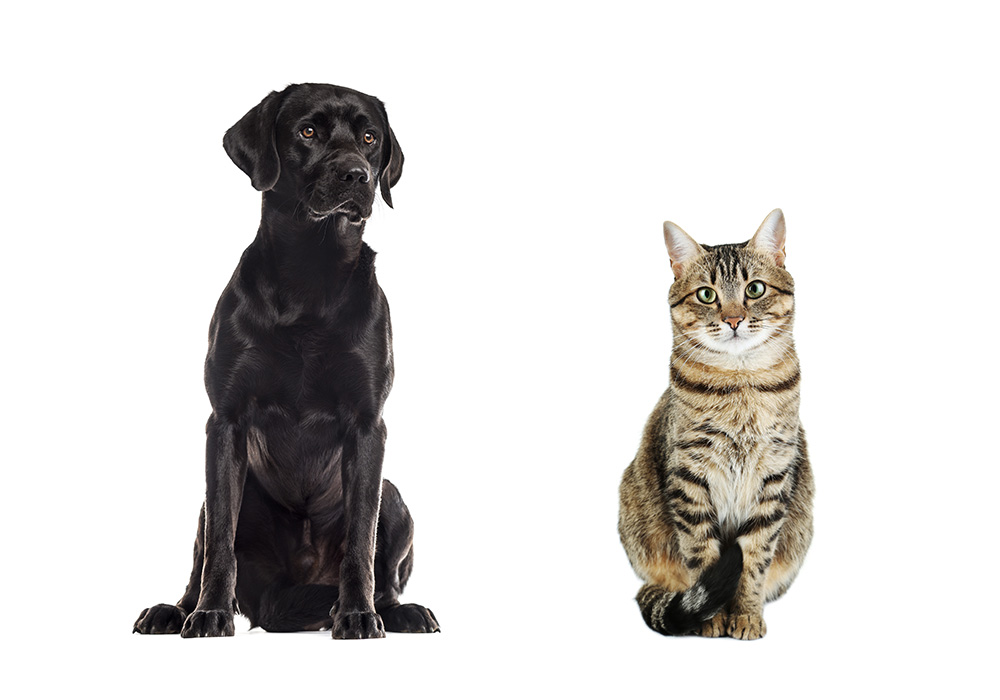Cat Health, Cats, Dog Health, Dogs
Would separate vet waiting rooms for your cat or dog reduce anxiety?
According to animal science experts this could make animal visits less stressful – so why do our pets stress out and how can we understand this?
We all know that taking our beloved dog or cat to the vet’s is an anxious time. Avoiding stress and anxiety is difficult enough in our own busy lives let alone our pets’.
Where is this stress coming from?
To understand this problem, we need to look at these three major factors which may give us a greater understanding of our stressed pets.
Smell
Us humans have 5 million olfactory receptors in our noses which are the microscopic proteins that allow us to detect odours. This is different for cats who have 45 to 80 million receptors and dogs have between 149 million and 300 million receptors which is why a dog can smell a cat from a great distance.
Your cat’s nose contains around 200 million nerve cells and a human only has 5 million. This makes a cat’s sense of smell around 14 times more sensitive than humans. This also contributes to a cat’s smell memory, in other words, once a cat smells something it may remember it for the rest of its life.
This being a major reason why cats are very easily triggered by dogs.
Your pooch has an amazing sense of smell, and we use their scenting abilities in many ways.
However, cats have an even better sense of smell and can identify differences between a larger variety of scents. All mammals have three types of scent receptor proteins in their noses. One of these proteins, V1R, is thought to be responsible for giving mammals the ability to differentiate one scent from another. Humans have just two forms of this V1R protein – dogs have nine and your cat has a massive 30 of them!
Most dogs have around 150 million scent receptors in their noses but this depends on the breed. German Shepherds, Basset Hounds, and Beagle breeds have 225 million and at top of the chart is the Bloodhound with 300 million.
Your cat will have an average of 200 million scent receptors in their nose which makes up for their lack of taste buds
They can be very sensitive to smells especially in a very alien environment like a vets waiting room.
Hearing
Both dogs and cats use their ears to express emotions. They both have remarkable hearing and even if we think it’s quiet their world is full of noise 24 hours a day. To put this into perspective, us humans can hear from 20 to 20,000 hertz – above this is considered to be ultrasonic.
A healthy dog has exceptional hearing but a cat’s hearing is off the scale! Clapping your hands may be ‘heard’ by a deaf cat – they can hear from between 45 to 60,000 hertz which is why they can hear many things that you don’t!
Dogs can hear frequencies up to around 45,000 hertz. They have 18 muscles to control their ears which allows them to move their ears independently, enabling them to detect where noises are coming from.
With an even greater range of ear movement, cats have 32 muscles which allow them to rotate their ears 180 degrees. Coupled with this they can hear at much higher frequencies.
Eye Sight
According to the experts, cats only need around 1/6 as much light as a human to see clearly. They can’t see in complete darkness though, only semi-dark conditions. However, during daylight, they can see as much detail at 200 feet as humans can at 20 feet so we can imagine that a cat can see a great deal and with huge depth and we can appreciate how they feel when they’re trapped in a pet carrier and carted off to their nearest vet waiting room!
One advantage for cats though is their third eyelid or nictitating membrane which helps to protect their eyes and acts as a shutter while they sleep during daylight hours. Their pupils are elliptical which greatly controls the amount of light that enters being vertical slits during the day and almost perfectly round at night. Your cat’s pupils dilate three times more than yours and its binocular vision is 140 degrees compared with dogs at 60 degrees and a 200-degree peripheral view compared with dogs at 240; your binocular view being 120 degrees and peripheral 210 degrees respectively.
The conclusion to all this is that although separating vet waiting rooms is ideal, it may throw up practical issues for them so all we can do as pet owners is to either choose our times for a visit by consulting with the receptionist or use the art of distraction like taking treats along with us.
Of course, avoiding vet visits and huge bills altogether can be mitigated to a degree by giving your cat or dog some high-quality food which is why we highly recommend our tasty treats and feeds include fresh meats and natural vegetables, combined with herbs and essential fats without grain and come in a variety of delicious flavours.

